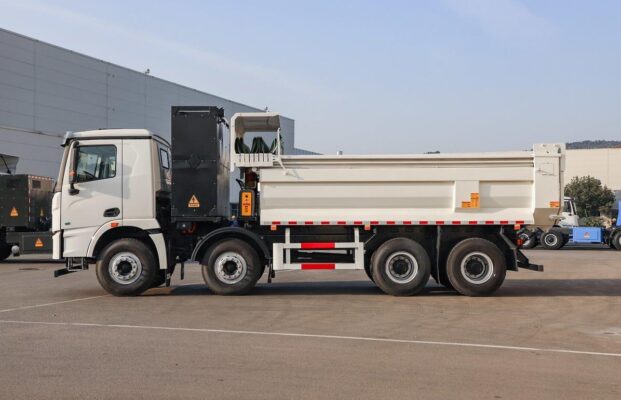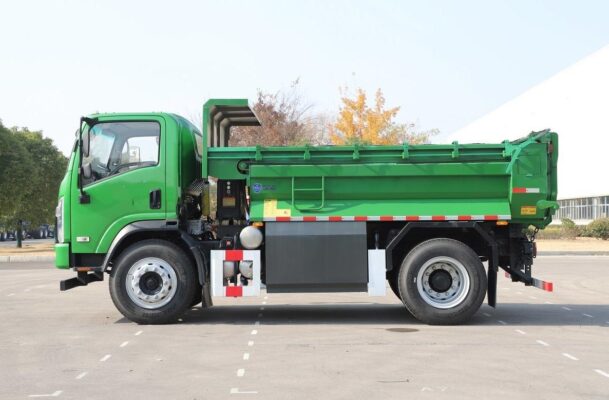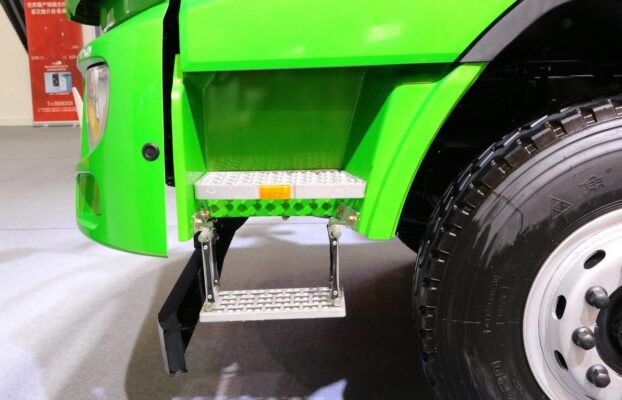Знания об электрогрузовиках
Fuel-saving Tips for Heavy Trucks
Опубликовано в от Электрические грузовики
First “Don’t”: Drive on the road at a moderate speed and plan the route well
Cities are experiencing increasingly severe traffic congestion. Before setting out each time, it is highly advisable to meticulously plan the driving route. Avoid simply starting the journey without a well-thought-out plan. Sometimes, it is more beneficial to take a few extra steps to circumvent congestion rather than getting stuck in a lengthy traffic jam, as this can lead to significant fuel savings.
Более того, there are numerous construction sections in the provincial capital currently. Pay close attention to the road repair and diversion information and opt for the nearest route to naturally save more fuel.
Например, if you are aware of a major road closure due to construction and can plan an alternate route that avoids heavy traffic, you can not only save time but also reduce the amount of fuel consumed by idling and stop-and-go driving.

Second “Don’t”: Don’t open windows at high speed and adjust the air conditioner moderately
Many truck owners mistakenly believe that closing the air conditioner and opening the windows for ventilation at high speed can lead to fuel savings. In reality, when the vehicle speed exceeds 80 kilometers per hour, the wind resistance resulting from opening the windows consumes more energy than the fuel consumption of the air conditioning system.
Кроме того, using the air conditioner typically increases fuel consumption by approximately more than 1 liter per 100 kilometers compared to not using it. Therefore, when driving in urban areas with frequent stops and starts, it is advisable to minimize the use of the air conditioner.
Let’s consider a long-distance highway drive. At high speeds, keeping the windows closed and relying on the air conditioning system’s proper setting can contribute to better fuel efficiency.
Third “Don’t”: Don’t be impatient when driving and leave early
Some truck owners, particularly the younger ones, tend to procrastinate in the morning and only leave at the last minute. Consequently, each time they travel, they are in a rush, constantly accelerating and braking, which is highly fuel-intensive. It is recommended that truck owners allocate a bit more time for their journey, drive smoothly, and thereby achieve fuel savings with ease.
A calm and composed driving style helps in maintaining a consistent speed and avoiding sudden and aggressive maneuvers that can spike fuel consumption.

Fourth “Don’t”: Don’t have insufficient or excessive tire pressure and wide tires increase fuel consumption
Incorrect tire inflation, whether it’s too low or too high, will result in increased fuel consumption. Regularly check the tire pressure. Более того, many young people nowadays have a penchant for car modifications. Однако, from a fuel-saving perspective, it is recommended not to randomly switch to wide tires as the increased wheel resistance will lead to higher fuel consumption.
Imagine a truck with under-inflated tires. The increased rolling resistance means the engine has to work harder, consuming more fuel to maintain the same speed.
Fifth “Don’t”: Don’t step on the brakes frequently and drive at a moderate speed to save fuel
“Frequent braking is like pouring fuel on the ground” has become a mantra for many drivers in the era of high oil prices. The key is to maintain the engine’s economic speed and adjust the vehicle speed in a timely manner based on the road conditions ahead, avoiding unnecessary braking.
Some drivers have a habit of rapid acceleration. Research indicates that the fuel consumption can differ by up to 112 milliliters when accelerating sharply compared to gradually reaching the same speed. Given the complex urban road conditions, there is no need to rush and drive at excessive speeds.
Более того, whether the vehicle speed is too slow or too fast, the fuel consumption of the vehicle will rise. Generally, a speed range of 60 к 80 kilometers per hour is the most fuel-efficient. If the speed continues to increase, the fuel consumption level will also escalate. Studies show that a car traveling at 120 kilometers per hour will consume 20% more fuel than at 100 kilometers per hour.
Sixth “Don’t”: Don’t warm up the car for too long
Adverse weather conditions can have a certain impact on the vehicle’s fuel economy. Например, rainy days can increase fuel consumption due to easy tire slippage; in summer, the high temperature, intense heat radiation, and frequent use of air conditioners can lower various technical indicators of the vehicle, leading to higher fuel consumption. It is suggested that vehicle owners minimize travel during inclement weather.
Many vehicle owners have a tendency to warm up their cars for an extended period before hitting the road in the morning. Однако, excessively long warm-up periods are not conducive to fuel savings. In fact, allowing the vehicle to move slowly and evenly for one or two kilometers can achieve the same warm-up effect.

Seventh “Don’t”: Don’t pile things in the car and drive with a light load
Unnecessary items will add weight to the vehicle and increase fuel consumption. To save fuel, vehicle owners should not be lazy or negligent and remember to frequently clean the trunk. By the same token, avoid filling the fuel tank to the brim. Especially for vehicles that predominantly operate in urban areas, adding two-thirds of the tank of gasoline each time helps keep the vehicle lightweight and reduces fuel consumption.
Think of a heavy truck carrying a heavy load of non-essential items. The additional weight not only strains the engine but also leads to higher fuel consumption over the course of the journey.
Eighth “Don’t”: Don’t use the car “extensively” and maintain the engine frequently
To achieve fuel-saving objectives, the previous “extensive” vehicle usage habits need to be changed. Particularly, take meticulous care of the engine and promptly address any issues. Regardless of the size of the problem, they can reduce the engine’s efficiency and subsequently increase the vehicle’s fuel consumption.
Regular engine maintenance, such as timely oil changes and filter replacements, ensures optimal engine performance and fuel efficiency.
Ninth “Don’t”: Don’t refuel blindly and choose the right time when the tank is full
When refueling, avoid blindly choosing high-octane gasoline. Except for a few high-end vehicles, most sedans are adequately fueled with 93-octane gasoline.
It should be noted that based on the principle of thermal expansion and contraction, the refueling time can be selected in the morning or evening when the temperature is lower to obtain slightly more gasoline. Кроме того, after precipitation overnight, the quality of the gasoline is typically purer in the morning.

Tenth “Don’t”: Don’t let the engine idle and change lanes as little as possible
Avoid engine idling. The fuel consumption during 3 minutes of engine idling is equivalent to the amount needed for the car to travel 1 kilometer. So when queuing, in a traffic jam, or waiting for someone for more than 1 minute, consider turning off the engine. Also, minimize frequent lane changes and strive to drive in a straight line.
Maintain a proper following distance from the vehicle in front. This helps in reducing the need for sudden braking and acceleration, which can save a considerable amount of fuel over long drives.
Ensure that the truck’s aerodynamics are not compromised. Например, damaged or improperly attached fairings and spoilers can increase wind resistance and subsequently fuel consumption.
Regularly inspect and clean the fuel injectors. Clogged or dirty injectors can lead to inefficient fuel combustion and higher fuel usage.
Use cruise control on long stretches of open road where the speed limit is consistent. This helps in maintaining a steady speed and can contribute to fuel savings.
When possible, avoid idling the engine while parked. If you need to rest during a long haul, it’s better to turn off the engine rather than letting it idle for extended periods.
Keep an eye on the vehicle’s fuel efficiency indicators and performance data. If you notice a sudden drop in fuel efficiency, it could indicate an underlying issue that needs to be addressed promptly.
Train drivers on fuel-efficient driving techniques and encourage them to follow best practices consistently.
Окончательно, invest in advanced fuel management systems and technologies that can provide real-time feedback and analytics to optimize fuel consumption.
В заключение, by adhering to these fuel-saving tips and constantly being vigilant about driving habits and vehicle maintenance, heavy truck owners and operators can significantly reduce their fuel costs, increase operational efficiency, and contribute to a more sustainable transportation industry.